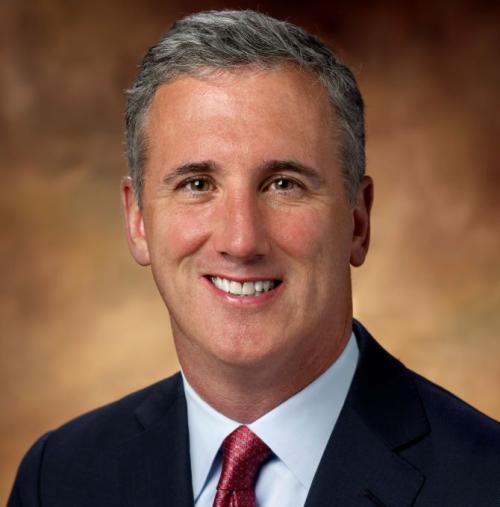Case study: Shamrock Capital Advisors and Texas Industries
Shareholder activism, like most things in the business world, is cyclical. There was definitely a time when activism revolved around shortterm shareholders pushing companies to sell off assets or go private. This was largely driven by the hedge fund community.
Then there were the politically motivated actions of unions and pension funds. Right now, however, activism is changing and there is a new focus on the notion that active involvement from sophisticated investors can help companies to unlock value for all their shareholders. Activists are also broadening their horizons. Many companies that have never seen campaigns in the past are starting to find themselves being targeted. When this happens, most have no idea how to respond or what to do.
Here we outline the story of a recent proxy contest that resulted in the dissident successfully acquiring three board seats. This case study comes from the perspective of the activist and outlines the rationale for action and the steps taken along the way. For those who have never faced a campaign before, it makes for enlightening reading. The target company was Dallas-based cement producer Texas Industries (TXI). The dissident was serial activist Shamrock Capital Advisors, the original Disney family investment firm, which had built up a 10 percent stake in TXI since September 2008.
Below expectations
According to Dennis Johnson, managing director at Shamrock until recently, the primary reason for the proxy fight was Shamrock’s view that TXI’s stock had underperformed in terms of total shareholder return across one-year, three-year, five-year and 10-year time frames compared with nearly every other peer in the sector. Over the previous year, in fact, the loss in total shareholder return was double that of the peer group. Shamrock strongly felt a change in strategic view on the board would go a long way to reversing this underperformance.
In addition, TXI’s return on invested capital, at less than 2 percent, was the second worst in the 14-company peer group. Shamrock saw this as a manifestation of poor asset allocation decisions. As proof, it pointed to the $776 million spent on expansion projects that had, to date, returned zero profit.
The most controversial aspect was the company’s compensation structure over its period of under performance. In the five years prior to 2008, TXI’s return on investment was 3.9 percent, significantly below the cost of capital. Yet, during the same period, management’s annual cash compensation grew at a compound annual rate of 25 percent. Shamrock felt compensation needed to be tied more closely to longterm performance, and this, in its opinion, was clearly not happening.
To make matters worse, TXI had a staggered board, and the directors up for reelection in 2008 received 49 percent withhold votes, a fact that was never satisfactorily explained by the company.
To run a successful campaign, Shamrock had to sell its dissatisfaction to the rest of the company’s shareholders and get them to support its short slate of t hree new di rect or s . Gaining majority support when trying to get directors elected to the board is a very difficult process, as many investors typically support management. Companies are able, as they should be, to mount vigorous campaigns defending their position, so the key to any successful proxy fight is organization. The TXI fight was three months in the making before it went public, and lasted four more months after that. It is worth noting that proxy fights are not a cheap process so should not be entered into frivolously.
Pressing the flesh
The first step, which took place before the campaign launch, was to meet with the largest shareholders to get a feel for what they thought about the situation. Following the launch, Shamrock met with the majority of the shareholder group to gain support for the campaign’s proposals and nominees.
Prior to the vote taking place, Shamrock followed up with each of the major shareholders. Part of the reason for Shamrock’s success was that it secured the attendance of the dissident slate of nominees at each of these meetings so shareholders could become familiar with them.
Simultaneously, Shamrock met with sell-side analysts to explain its platform and introduce its nominees. Analysts can be a key constituency, since they will be advising clients on any deal.
Proxy advisory firms play an important role in the process as well and Shamrock met with each of the major players during the two to three weeks before the elections. Johnson says multiple meetings are often necessary and the presentation may need to be adapted several times to present the best argument. It is important that all nominees attend
For its efforts, Shamrock gained the support of RiskMetrics and Proxy Governance and also had three major shareholders, representing 24 percent of the stock, publicly support the nominees prior to the annual meeting. In the event all three nominees were elected to the board at the 2009 annual meeting. In addi ti on, proposal s to declassify the board, implement maj ority voting and force shareholder approval of a rights plan all gained overwhelming support. After the vote, Stanley P Gold, Shamrock’s president and CEO, said all he wanted was for the new board members to make money for him and other shareholders. ‘After all,’ he added, ‘that’s why we’re in this business.’
Proxy proposals and activists seeking seats on the board should not be dismissed out of hand. Engagement can go some way to achieving a solution and avoiding a proxy fight, but when facing well-organized and strongly motivated dissidents it is important to understand the arguments they are likely to put forward, in order to familiarize yourself with the steps outlined above. Failure to do so may result in the loss of board seats for some – or even all – your existing directors.








